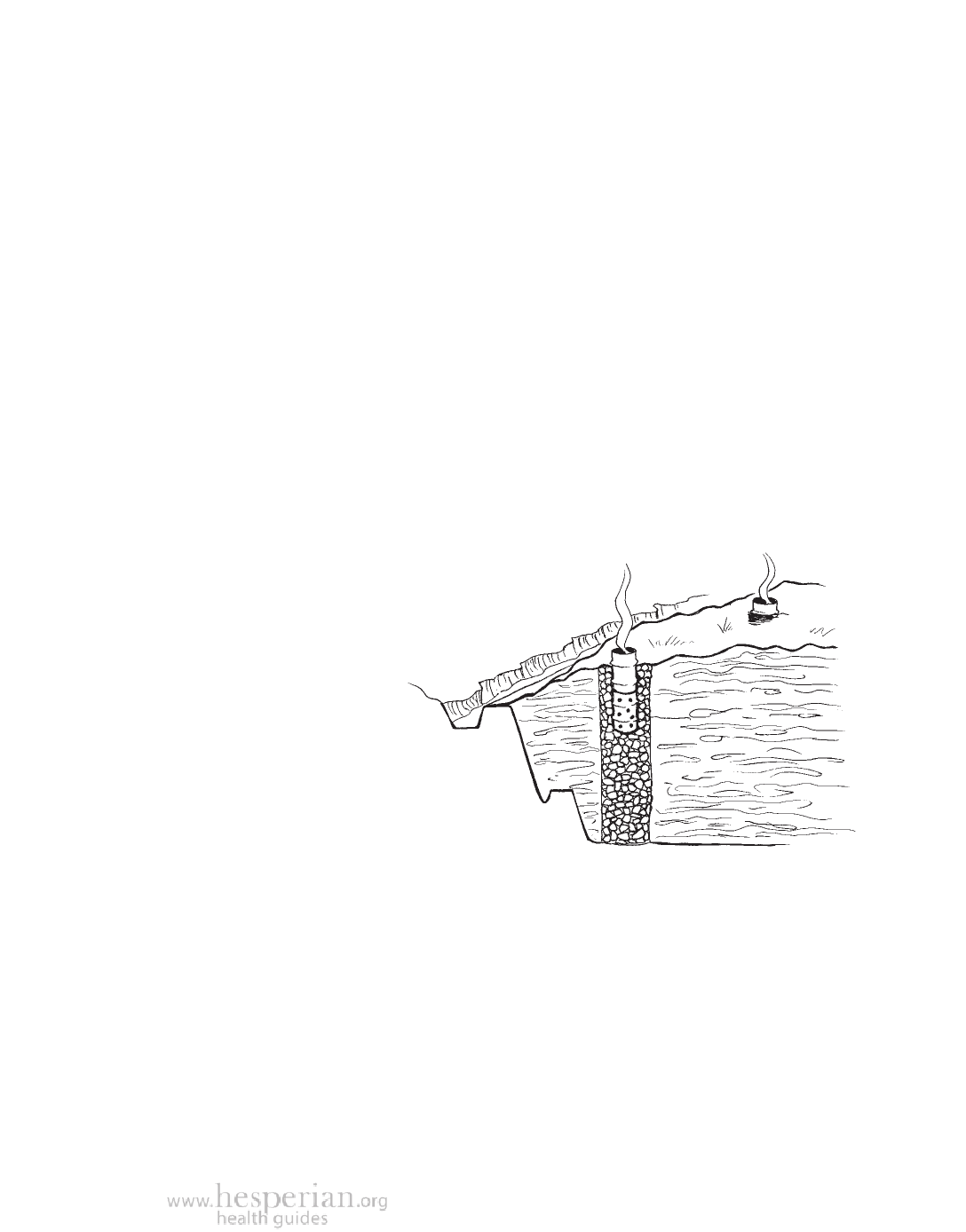
Sanitary Landfills 415
Difficulties with sanitary landfills
A pit where trash is dumped and then covered with soil can be maintained
safely with few problems. But it can develop problems if liquid waste and gas
(methane) collect in the pit.
Liquid waste (leachate)
If rainwater soaks into the landfill, it creates bad-smelling liquid waste that
can carry poisons from trash into the groundwater. This is why it is important
to line the landfill well and not to make it near a river, stream, or lake.
The best way to prevent leachate is to keep the landfill covered with a roof,
or a canvas or plastic cover, until it is capped.
Dangerous gas
In landfills containing mixed waste, bacteria can grow and create methane
gas. Methane can explode or catch fire if not managed carefully, and it adds
to global warming (see page 33). In many places, methane from landfills is
captured and used to generate electricity. If you have no resources to do this,
the best thing to do with methane is to provide vents for it to escape.
A simple vent consists of a chimney made of
small rocks held in a circular or square shape
by a wire mesh, or you can use 200-liter
drums with the bottoms removed.
The height of the vent is
raised as the height of
the landfill increases.
The number of vents needed
depends on the size of the pit
and the type of trash in the landfill.
A landfill that has been capped and
has grass or plants growing on it may still
release methane. If there are patches of
dead grass, particularly if they are shaped
like a circle, this is a sign that methane is
Gas vents in a landfill
escaping from the landfill. Place signs and warn people to stay at least
10 meters away from the area, because an explosion could be caused
accidentally. Trained professionals should examine the landfill to decide how
best to prevent an explosion.
A Community Guide to Environmental Health 2012